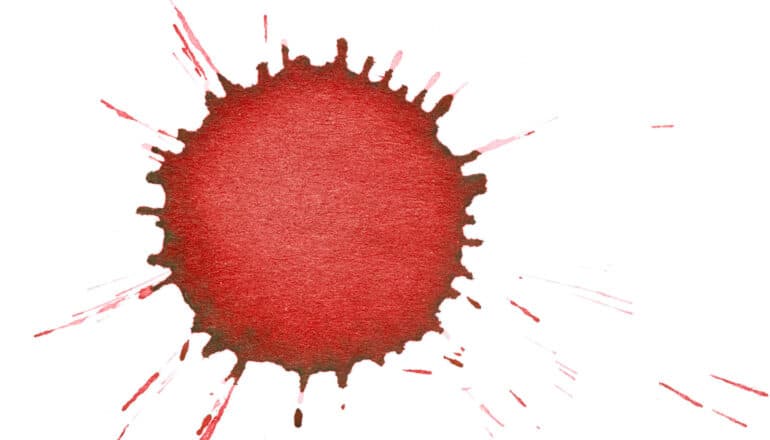Bloodstain insights could give forensic investigators new clues
- New research offers insights into how blood stains cotton fabrics, allowing investigators to gather additional information from forensic evidence.
- The study found that the number and spread of “fingers” in a bloodstain can indicate the velocity of the blood when it struck the fabric, with more fingers suggesting faster movement.
- Another key indicator of velocity is satellite droplets, which are tiny stains surrounding a central stain; the more satellite droplets, the faster the blood was moving.
- The physical properties of fabrics, such as plain-woven cotton and twill, can make it easier or harder to estimate the velocity of blood spatter, with plain-woven cotton being the most straightforward.
- The study’s findings are promising and suggest that analyzing bloodstains on different fabrics could provide new clues for forensic investigators, with further research planned to explore this area further.

New research offers key insights into how blood stains cotton fabrics, allowing investigators to gather additional information from forensic evidence.
“When blood strikes fabric, it leaves a stain,” says Tiegang Fang, corresponding author of a paper on the work.
“But it can be difficult to accurately assess things like how quickly blood was traveling when it struck the fabric. Was it going fast? Slow? Did someone just brush up against the blood? It’s hard to tell, because once the blood comes into contact with the fabric, it wicks across the surface of the fibers in the fabric, spreading out.
“We’ve now done analysis that advances our understanding of how these bloodstains form and can be used to estimate the velocity blood was traveling when it struck cotton fabrics,” says Fang, a professor of mechanical and aerospace engineering at North Carolina State University. “This can be used to provide insights for forensic investigations.”
For the study, the researchers evaluated five different fabric surfaces: plain-woven cotton fabric, which has the same surface characteristics on the front and back; the front and back of a cotton twill, which have different characteristics; and the front and back of a jersey knit, which also have different characteristics.
The researchers splashed these fabrics with porcine blood that was treated to ensure it would behave consistently across all of the testing. The blood was applied to the fabric surfaces at 12 different velocities, and the impact of the blood on the fabric was captured using multiple high-speed cameras, with images being captured at a rate of four frames per millisecond. Cameras also captured the way the blood traveled through the fabrics over time.
The researchers were then able to analyze these images to identify patterns in the bloodstains that correlated to the velocity of the blood spatter.
“One key finding relates to the ‘fingers’ of the blood stain,” Fang says. “When you look at a bloodstain on fabric, you will sometimes see thin tendrils that spread out from the center of the stain. Those tendrils are referred to as fingers.
“We found that the more fingers a bloodstain has, the faster the blood was moving when it struck the fabric. However, over time, these fingers may spread out and run together.
“Satellite droplets were another key indicator of velocity,” Fang says. “Basically, the faster the blood was traveling when it hit the fabric, the more likely there are to be tiny stains surrounding a central stain—and the faster the blood was moving, the more satellite droplets there would be.”
However, the researchers found that some of the fabrics offered fewer clues than others.
“The physical properties of plain-woven cotton make it much easier to estimate the velocity of blood spatter compared to the other fabrics,” Fang says. “Whereas the properties of twill make it the most difficult to estimate the velocity.
“The results of this study are promising, and we’re interested in doing additional work with a wider variety of fabrics, weaves, and yarns. It’s clear that the specific structures of each surface play a critical role in how these bloodstains form and what we can learn from them.”
The paper appears in the journal Forensic Science International.
Support for the work came from the National Institute of Justice.
Source: North Carolina State University
The post Bloodstain insights could give forensic investigators new clues appeared first on Futurity.
